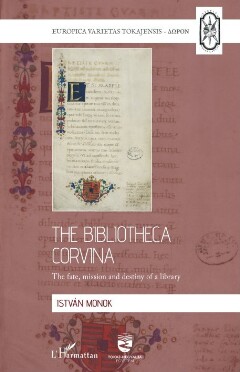Page 117 [117]
Hungarus consciousness
- Hungarian consciousness:
the appropriation of the
Biblotheca Corvina
At the beginning of this chapter, we point out that the 16th-17th century his¬
tory of the Bibliotheca Corvina has conclusions that go beyond philological find¬
ings. Just as in the 19th and 20th centuries every major cultural policy course
adopted a position on this library, so in the 16th and 17th centuries the collec¬
tion and its disintegration were a symbol of the disintegration of the country. The
Habsburg and Hungarian succession struggles (Ferdinand I and Janos Szapolyai),
the independence of Transylvania from Hungary as a vassal state of the Ottoman
Empire, and the Turkish conquest of the central regions of the country precisely
chart the directions of the library’s dispersal. In this analogy, the humanist inten¬
tion to save the codices, to find textual variants of the works of certain classical
or medieval authors, can be interpreted as Christian unity (unio christiana) behind
the political intention to push back the Muslim Turkish Empire. Just as the cen¬
tral idea of Hungarian (and Transylvanian) political thought was the reunification
of the country (Habsburg party, Turkish party, independent Hungarian national
aspirations), the rescue and reassembly of the Bibliotheca Corvina became a symbol
for Hungarian" culture as a culture in its own right.
‘The sources quoted here in more detail are intended as examples of the three
different attitudes. The letters and prefaces of the Western European humanists
on the history of various pieces of the Corvina lament the loss of the texts of
antiquity, and Istvan Szamoskézy, the Transylvanian Hungarian humanist his¬
torian, naturally joins in. But for him, it is not only that. From the very begin¬
ning of Transylvania’s transition from a voivodeship to a principality (1541), the
Transylvanian princes made efforts to encourage the culture of Hungary (and not
only Transylvania) centered on Western Christian values. The princely court of
Gyulafehérvar is a worthy heir to the court of Buda in its function of organising
culture, even if their financial resources are not comparable. The establishment of
536 Iris important to emphasise that it is not Hungarian culture, since the national aspect did not exist
in the same form as it did in the mid-18th century. It was about the unity of the Hungarian Kingdom
against the Habsburg and Turkish Empires, and this Hungarian Kingdom had a very large number of
ethnic inhabitants. At the same time, there did exist a unified ,, Hungarus” consciousness. See KLANICZAY
T. 1988; Kranıczay T. 1993.
115

